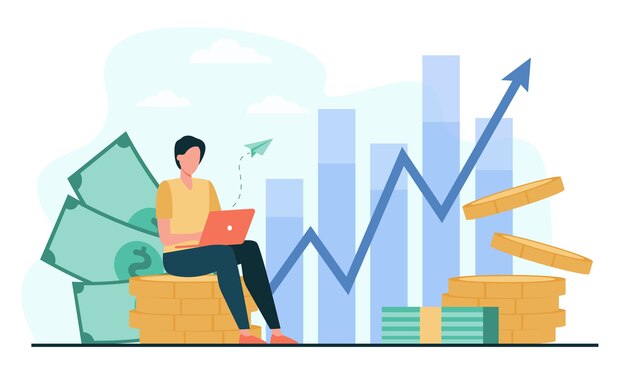How does capital investment work?
The process of putting money into a business with the intention of making profits in the future is known as capital investment. It is an investment that is made over the long term with the intention of receiving a return over time. This long-term investment can take many forms, including the acquisition of assets, the improvement of technology, the expansion of production, or the construction of brand-new infrastructure. The significance of investing in capital Capital investment is essential for the growth and success of any business. It enables businesses to maintain market competition while also increasing productivity and efficiency. It can assist businesses in entering new markets, introducing new goods and services, and expanding operations. Additionally, it contributes to a nation’s overall economic growth and creates employment opportunities. The investment in financial assets like stocks, bonds, mutual funds, or other securities is known as financial capital investment. It’s a type of investment that gives investors the chance to make money or increase their capital. 1.1 Types
Equity investments involve purchasing company shares in exchange for a portion of that company’s ownership. Debt investments involve borrowing money or purchasing bonds in exchange for a fixed interest rate. 1.2 How does it function? Investors purchase financial assets with the intention of receiving a return on their investment in financial capital investment. Dividends, interest, or gains on capital are all options for the return. Financial capital investment offers investors a diversified portfolio that can assist in mitigating the risk associated with investing in a single asset. 2. Physical investment in capital The acquisition of tangible assets like land, buildings, and machinery is referred to as “physical capital investment.” It entails purchasing tangible assets that are utilized in the manufacturing process or in the provision of goods and services. 2.1 Types
Investments in Land and Buildings: Buying land and building buildings or purchasing an existing building. Investments in Equipment and Machinery: This involves purchasing tools, machinery, or other equipment that is required for production or operations. 2.2 How does it function? Physical capital investments can yield a long-term return on investment, despite requiring a significant initial investment. Physical capital investments can increase a company’s value over time and contribute to the company’s overall expansion and success. 2.3 Examples
Purchases of land, buildings, machinery, and vehicles are examples of investments in physical capital. Quick Look at the Top 10 Asset Management Software Things to Consider Before Investing in Capital 1. Profit from Investment The ratio of an investment’s profit or loss to its cost is known as return on investment (ROI). Prior to making a capital investment, it is a crucial consideration. How do you compute? ROI can be calculated by dividing an investment’s total profit by its total cost and multiplying by 100 to get a percentage. 2. Risk

An investment’s likelihood of failure or loss is referred to as risk. Examining the level of risk associated with a capital investment and taking steps to reduce it are crucial. How can we reduce? Diversifying the investment portfolio, conducting in-depth research and analysis, and having contingency plans in place are all ways to reduce risk. 3. Horizon of Time The amount of time an investment is held for before it is sold or liquidated is known as the time horizon. A capital investment’s time horizon is an important consideration because it can affect the potential return on investment. Importance
Higher returns are possible with a longer time horizon, but there is also more risk involved. A shorter time horizon can result in a more stable and predictable outcome, despite having lower returns.




